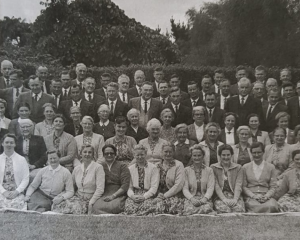The future of the West Coast rail network is a case of "watch this space".
A Kiwi Rail report today shows the State-owned company had previously suggested closing its entire freight business.
A heavily censored version of the commercial review by Treasury in 2014 has been released.
Kiwi Rail said the review was to understand the capital requirements of the rail freight corridor, and to consider the challenges and opportunities of supporting tourism, exporters and domestic freight movements.
The Government had encouraged Kiwi Rail to be "bold" in the scenarios it considered in the review.
The four options included a "trimmed network", separate North and South Island networks, an upper North Island business only, or largely closing the rail freight business.
Discussion on the West Coast section of the network was blacked out.
The "base assumption" for viability was Solid Energy and Westland Milk Products "the only two major customers" on the line, the review said.
"Solid Energy has reduced tonnage to 1.5 million for 2015, down from 2.1 million tonnes in the previous year."
West Coast-Tasman MP Damien O'Connor said it was a case of "watch this space" given the uncertainty surrounding Solid Energy and the Stockton coalmine.
Labour had "spent hundreds of millions of dollars" securing the West Coast coal route to make it fit for purpose, and keeping it open was vital to underpin the regional economy, Mr O'Connor said.
"The National Government has never been enthusiastic about rail. We have every right to be scared about what they'll do to rail, and where that will leave the West Coast," he said.
"We need to ensure it remains open and efficient for tourism and the dairy industry. The fact that Westland Milk Products has plants on both sides of the alps makes rail that much more important."
Mr O'Connor acknowledged that spending begun by Labour to renew rail infrastructure had continued under National.
However, if the Government continued to "bag rail" in favour of road, "then the West Coast economy is under threat".
The Treasury report said the Midland Line is classified as a main line, the Stillwater-Ngakawau route a secondary main line, and the Greymouth-Hokitika route a minor rail line.
Rail and maritime union Canterbury-West Coast organiser John Kerr said the Midland Line and its connecting lines were in no danger of closing.
He described as "rumour" speculation that several viaducts on the route due for replacement could cause the West Coast connection to close.
"It's our understanding these routes are still economic. Obviously, that situation is contingent on Solid Energy's future." Mr Kerr said it was "heartening" the review had distinguished between the "above rail" business, which was viable, and "below rail" and that it needed to be seen as a national transport network.
The focus on tourism was also a plus for the West Coast network given the growth on the Tranz Alpine, Mr Kerr said.
Kiwi Rail chief executive Peter Reidy said the review did not consider the many social, public and environmental benefits of rail.
Kiwi Rail has about 3500km of operational track, which has to be maintained and upgraded even where there are no passenger services and very little freight.
"Some parts of the network are uneconomic, [but] we have no plans to close any lines," Mr Reidy said.












